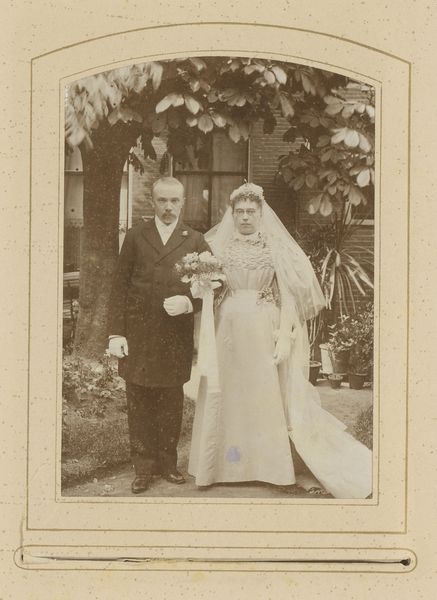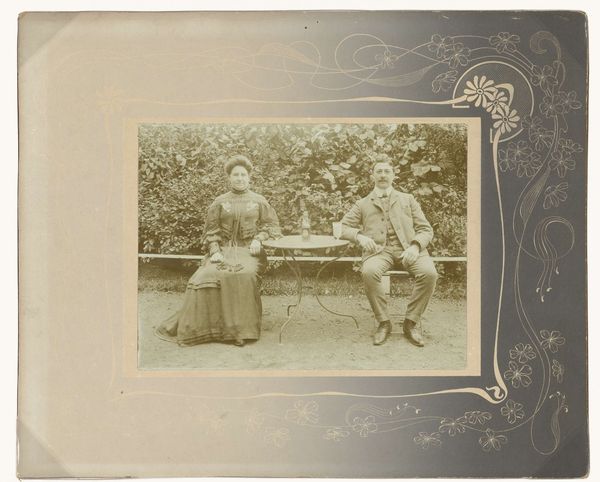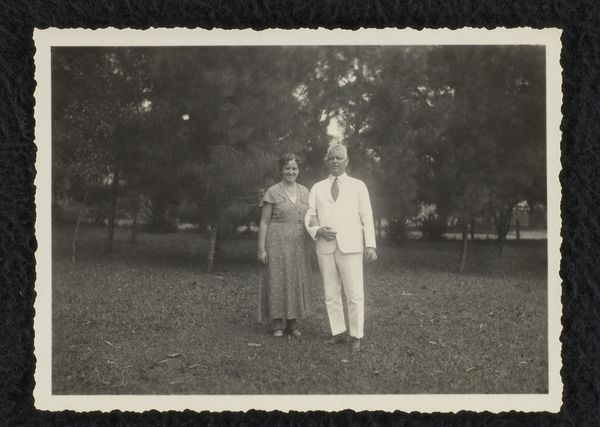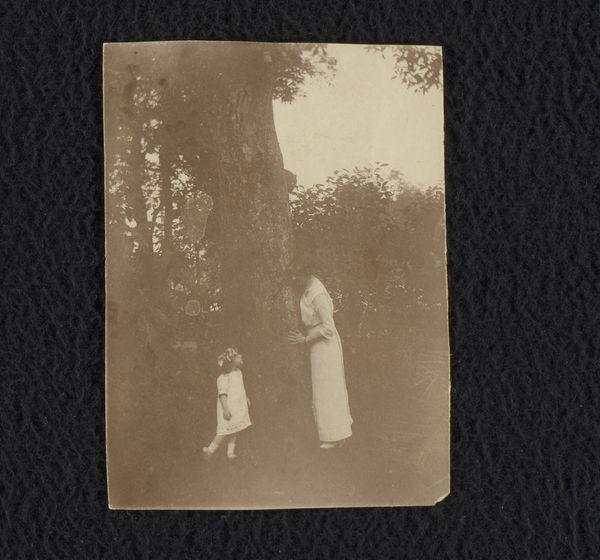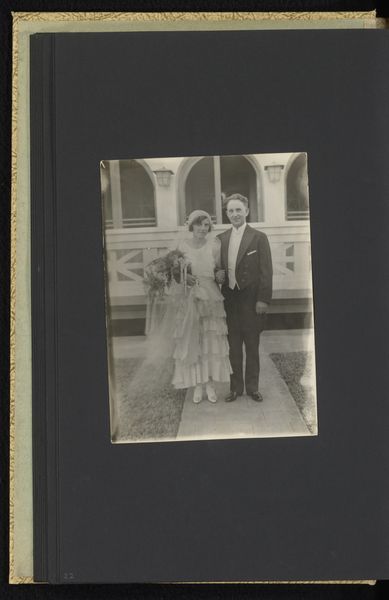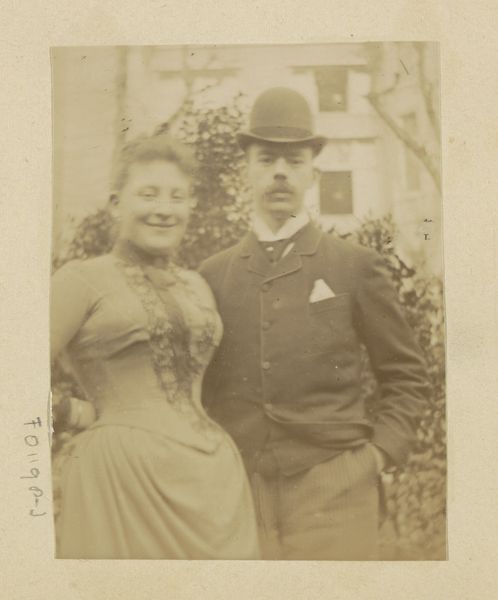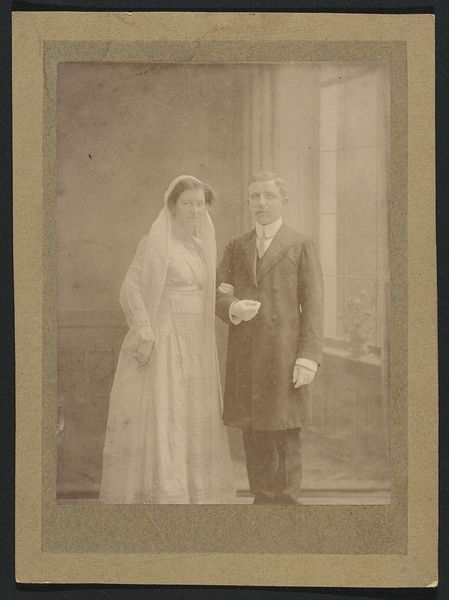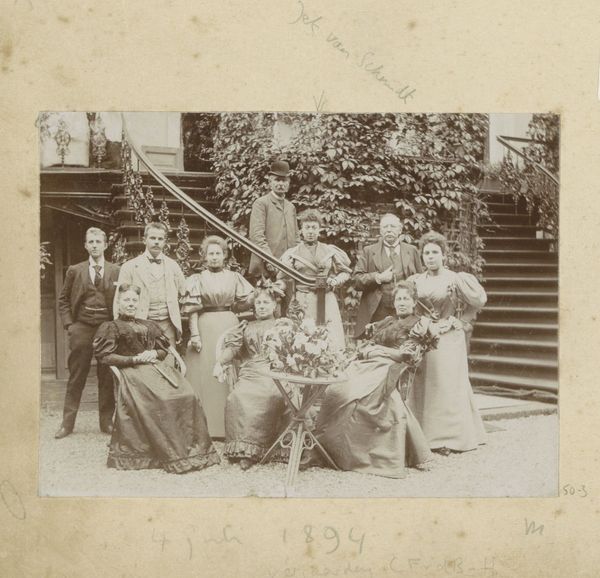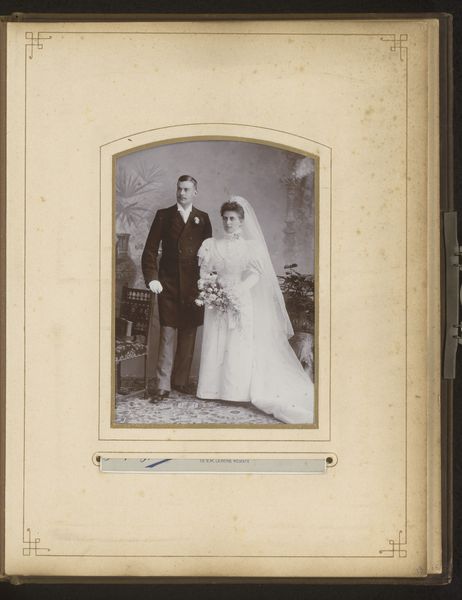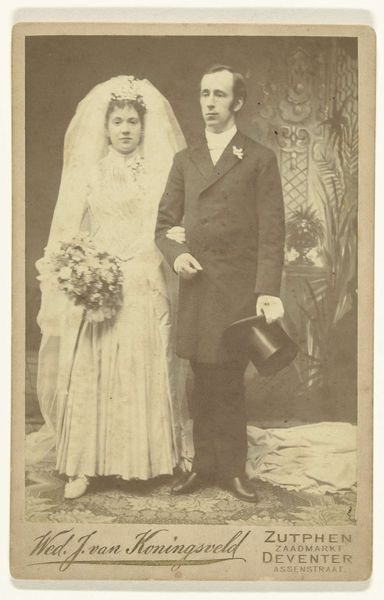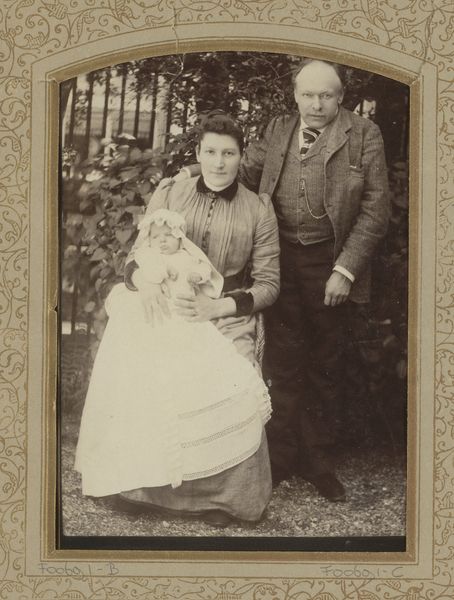
photography
#
portrait
#
pictorialism
#
street-photography
#
photography
#
group-portraits
Dimensions: height 90 mm, width 117 mm
Copyright: Rijks Museum: Open Domain
Curator: This photograph captures a wedding in Amsterdam, taken in 1909. Titled "Bruidspaar Robert-De Roever op het balkon van Vondelstraat 118 te Amsterdam", it depicts the bride and groom on a balcony, employing the soft focus characteristic of Pictorialism. Editor: My immediate sense is of a ghostly dream, a half-remembered fragment. The muted tones and gentle blur give it an ethereal quality, almost like a memory fading with time. It’s sweet, but undeniably sad. Curator: It's interesting you mention the sense of sadness. Early photography, particularly wedding portraits, was often fraught with socioeconomic tensions. Consider the pressure on women, especially, to secure their future through marriage. The formality, the staged nature – these weren't always joyful occasions in a vacuum. Editor: Absolutely, the clothing alone carries so much weight! The bride’s dress, the groom’s suit, they symbolize status, hope, and a commitment to societal roles. Is there also a sense of vulnerability in how exposed they are on this balcony, facing an unseen public? Curator: That's an insightful observation. Balconies have long been liminal spaces, thresholds between private and public life. And to photograph a wedding like street-photography implicates these historical subjects into this tension. To make the ritual of marriage public spectacle invites social critique. Editor: Yes, they're not simply individuals; they’re embodying expectations and narratives bigger than themselves. The blurring actually reinforces that— it abstracts them from reality and moves them toward representation. It begs the question: do we truly see Robert and his bride, or the ideals they’re meant to represent? Curator: Indeed. This image speaks volumes about the constructed nature of identity, and especially, gender roles in the early 20th century, echoing larger discussions in feminist and sociological contexts. Editor: Examining the symbology behind their attire in relation to their cultural contexts adds layers to an image initially perceived only as romantic or quaint. The ghosts that reside in that photograph begin to come to life. Curator: Precisely, moving past surface readings can unveil more complex power dynamics and historical circumstances embedded in a seemingly simple photograph. Editor: Well, I won't look at wedding photos quite the same way again! Curator: Nor will I! Thanks to your fresh eyes, I notice the way these traditional photographs may challenge norms and provoke questions regarding cultural continuity and cultural change.
Comments
No comments
Be the first to comment and join the conversation on the ultimate creative platform.

